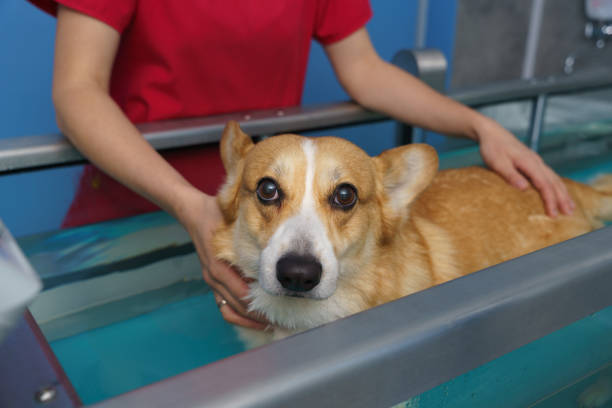Hydration and Water Quality Guidance for Small Herbivores
Proper hydration and water quality are essential components of care for small herbivores such as rabbits and guinea pigs, and they also affect related species kept as companions. This brief overview highlights how water affects nutrition, housing, grooming, enrichment, and general health, and points to practical steps owners can take to keep water safe, accessible, and appropriate for their animals.

Small herbivores depend on reliable access to clean water as a foundational part of nutrition and overall welfare. Rabbits and guinea pigs rely heavily on moisture to support digestion, urinary health, and thermoregulation; inadequate water can lead to reduced food intake, gut stasis in rabbits, and concentrated urine in guinea pigs. Hamsters are smaller and obtain some moisture from food but still need fresh water daily. Ferrets are not herbivores and have different dietary and hydration needs; owners should not apply herbivore-specific guidance to obligate carnivores without veterinary advice.
How much water do small herbivores need?
Water needs vary by species, size, diet, temperature, and activity. Adult rabbits commonly drink 50–150 mL per kg of body weight per day depending on diet and environment; guinea pigs often drink roughly 60–100 mL per kg daily. Hamsters generally consume smaller absolute volumes but can dehydrate rapidly if water is unavailable. Diets rich in fresh vegetables and high-moisture forage reduce voluntary drinking, while dry pellet-heavy diets increase it. Keep water volumes under observation: any sudden reduction in intake or prolonged absence of drinking warrants attention to housing conditions, stressors, or early signs of illness.
What water quality matters for rabbits and guinea pigs?
Water quality means clarity, lack of contaminants, and neutral taste and smell. Use potable tap water where municipal standards are met; if your local supply has heavy chlorine smell or known contaminants, consider filtered water that removes chlorine, heavy metals, and particulates. Avoid adding flavorings or supplements unless prescribed by a veterinarian: those can alter intake patterns or nutrient balance. Ensure water is at a moderate temperature — not icy cold and not hot — and change standing water daily to reduce bacterial growth and algae, particularly in warm climates or in outdoor enclosures.
Hydration delivery: bottles versus bowls
Two common delivery methods are sipper bottles and open bowls. Bottles reduce contamination from bedding and droppings and can be convenient in wire-sided cages; however, they can malfunction or clog, and some animals prefer drinking from an open source. Bowls allow easier monitoring of drinking behavior and are often preferred by rabbits and guinea pigs; choose heavy ceramic bowls or shallow stainless steel dishes to prevent tipping and contamination. For hamsters, small dishes or bottles designed for their size work best. Check all delivery systems daily for leaks, blockages, and hygiene issues.
Monitoring hydration and behavior changes
Regularly observe your pet’s drinking patterns, urine output, fur quality, and energy levels. Signs of dehydration include reduced skin elasticity (tent test), sunken eyes, dry mucous membranes, decreased urine production, and lethargy. Behavioral changes such as reduced socialization, less grooming, or picky eating can accompany hydration issues. Record typical daily water consumption for comparison; sudden changes are more meaningful when you know the baseline. If you notice persistent changes, consult a veterinarian experienced with small mammals promptly.
Housing, grooming, and enrichment effects on hydration
Housing choices affect water cleanliness and access. Bedding that readily absorbs spillage increases bacterial load, while wire cage floors can complicate bowl placement—provide solid resting areas to allow comfortable access to water. Grooming and hygiene influence hydration indirectly: matted fur or nasal discharge can reduce an animal’s ability to drink comfortably. Enrichment that encourages natural foraging and play can help maintain normal eating and drinking rhythms—offer hay, chew toys, and safe food puzzles that complement water access rather than obstruct it. Ensure multiple water points in group housing to reduce competition and stress.
Veterinary considerations and common problems
Some medical conditions — dental disease, gastrointestinal stasis, urinary tract infections, and kidney disease — affect thirst and ability to maintain hydration. Routine veterinary checks can identify dental overgrowth or mouth pain that impedes drinking. In older animals, decreased mobility or arthritis can make reaching a bottle or bowl difficult; adjust placement to floor level or provide raised platforms as needed. For species differences, remember ferrets and other carnivores require distinct nutritional and hydration care; seek species-specific guidance from a veterinarian when in doubt.
Conclusion
Maintaining good hydration and water quality for small herbivores involves appropriate water sources, regular monitoring, clean housing, and attention to diet and behavior. Use reliable water supplies, choose delivery methods suited to the species, observe patterns of intake, and involve a veterinarian for persistent concerns. Thoughtful daily care supports digestion, urinary health, and overall well-being in rabbits, guinea pigs, hamsters, and other companion small mammals.





